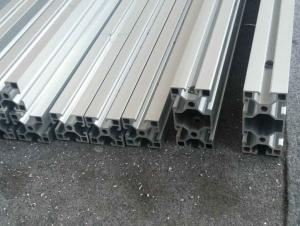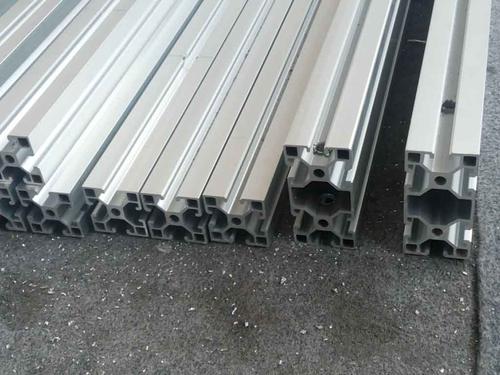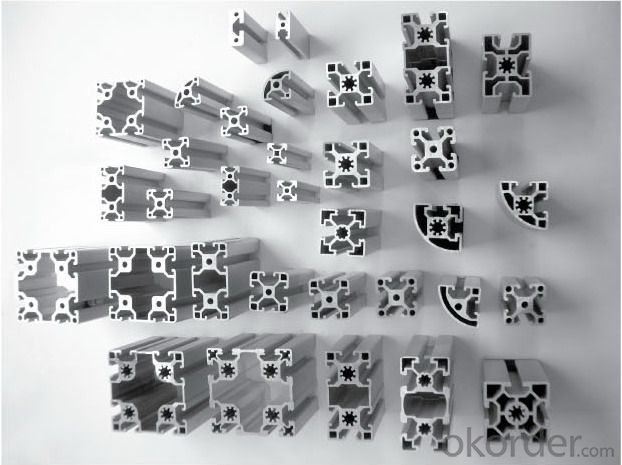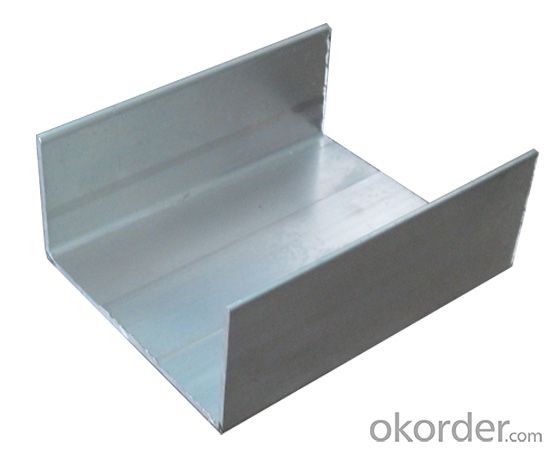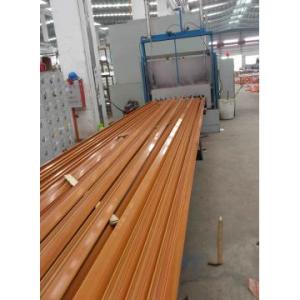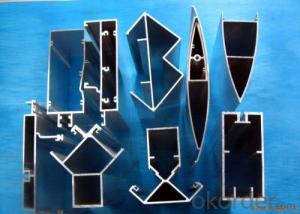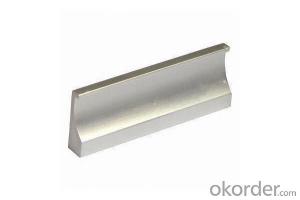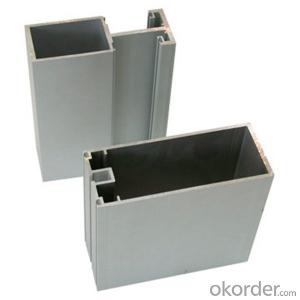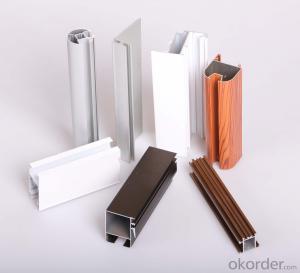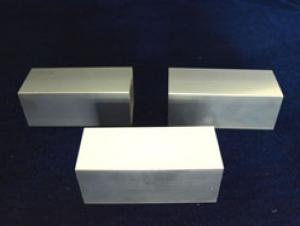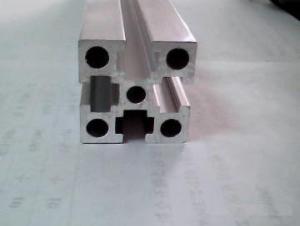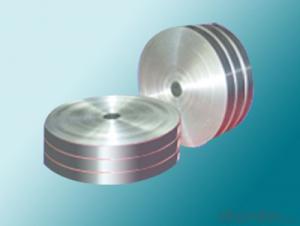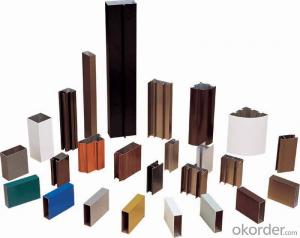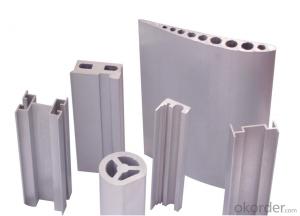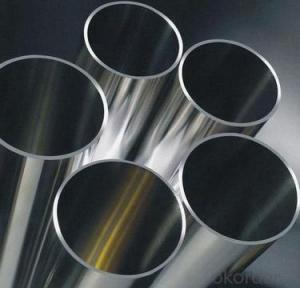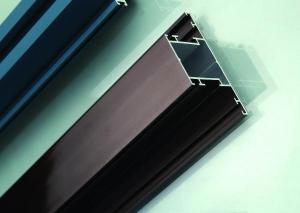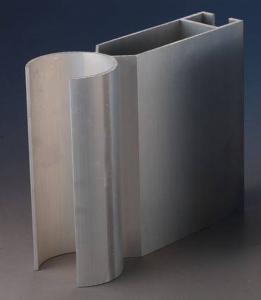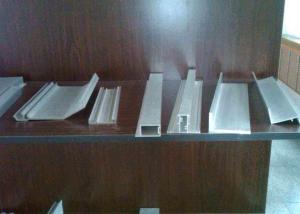Anodized Aluminum Profiles for LED Strips of Good Quality
- Loading Port:
- Guangzhou
- Payment Terms:
- TT OR LC
- Min Order Qty:
- 5 m.t.
- Supply Capability:
- 1000 m.t./month
OKorder Service Pledge
OKorder Financial Service
You Might Also Like
Specification
1.Structure of Aluminium Profile of Good Quality with Anodizing Description:
Anodizing (also spelled anodising, particularly in the UK and Australia) is an electrolytic passivation process used to increase the thickness of the natural oxide layer on the surface of metal parts. Anodized aluminium surfaces, for example, are harder than aluminium but have low to moderate wear resistance that can be improved with increasing thickness or by applying suitable sealing substances.
2.Main Features of theAluminium Profile of Good Quality with Anodizing:
High corrosion-resistance;
weather-resistance;
heat-resistance;
alkali-resistance and impact-resistance properties.
3.Aluminium Profile of Good Quality with Anodizing Images:
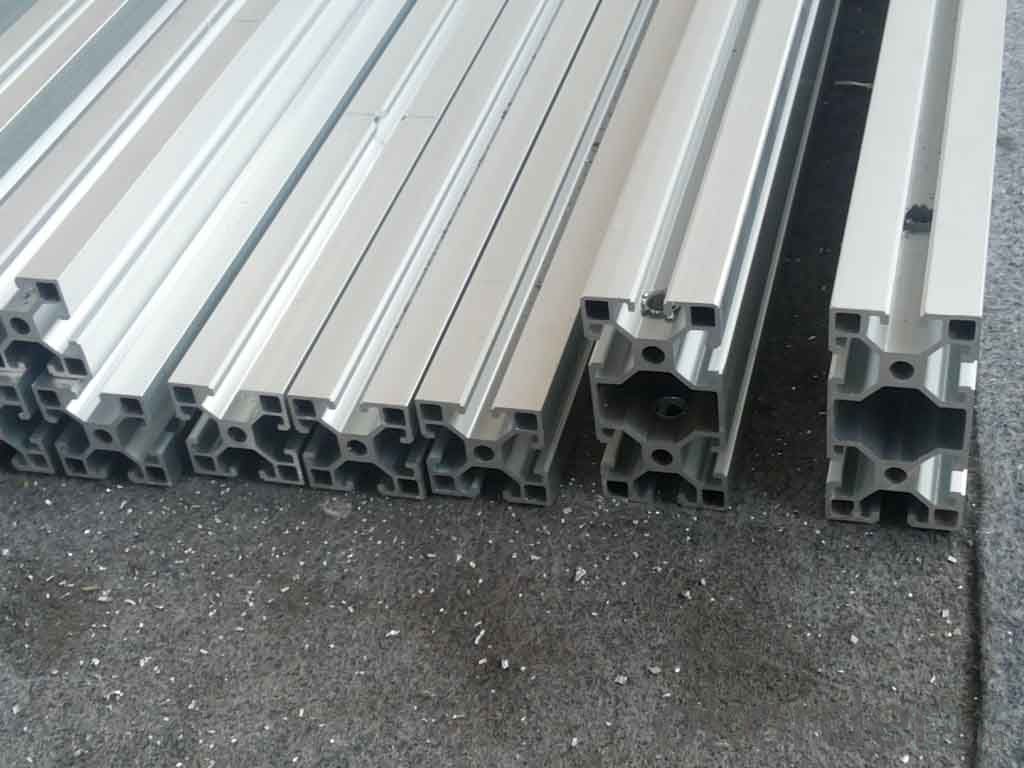
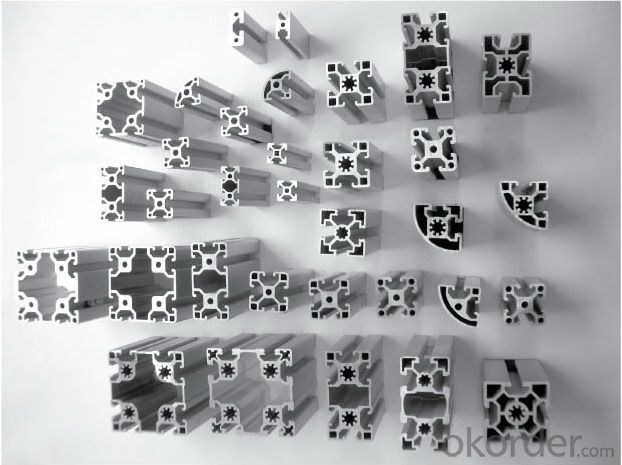
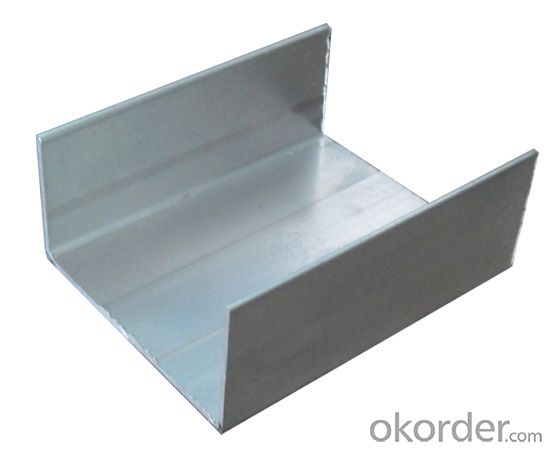
4.Aluminium Profile of Good Quality with AnodizingSpecification:
1. Material: 6063,6061,6060,6005,6005A,etc.
2. Temper: T5 or T6
3. Finish: Mill finish, anodizing, powder coating, electrophoresis, wooden transfer or pvdf/carbon-flouride coated, polishing, brushing, sand blasting
4. Various colors: Silver, bronze, black, gold, blue, grey, champagne, bright, etc.
5. Machining: Cutting, punching, drilling, tapping, milling, bending, welding, CNC etc.
5.FAQ:
①How about your company?
A world class manufacturer & supplier of castings forging in carbon steel and alloy steel,is one of the large-scale professional investment casting production bases in China, consisting of both casting foundry forging and machining factory. Annually more than 8000 tons Precision casting and forging parts are exported to markets in Europe, America and Japan. OEM casting and forging service available according to customer’s requirements.
②How to guarantee the quality of the products?
We have established the international advanced quality management system,every link from raw material to final product we have strict quality test;We resolutely put an end to unqualified products flowing into the market. At the same time, we will provide necessary follow-up service assurance.
- Q: This question asks if aluminum profiles can be utilized for constructing interior partitions or ceilings.
- <p>Yes, aluminum profiles are commonly used for interior partitions and ceilings due to their strength, durability, and lightweight properties. They offer design flexibility, are easy to install, and can be used in conjunction with various materials like glass or fabric. Additionally, aluminum profiles are resistant to corrosion and require minimal maintenance, making them a popular choice for both residential and commercial applications.</p>
- Q: Is it possible to recycle aluminum profiles and use them again in construction projects?
- <p>Yes, aluminum profiles can be recycled and reused in construction. Aluminum is highly recyclable, and the recycling process requires significantly less energy compared to the production of new aluminum. Recycled aluminum maintains its properties, making it suitable for various construction applications. This practice not only conserves resources but also reduces waste and environmental impact.</p>
- Q: What are the different surface patterns available for aluminum profiles?
- There are several different surface patterns available for aluminum profiles, each offering unique aesthetic and functional benefits. Some of the most commonly used surface patterns include: 1. Smooth: This is the most basic surface pattern, with a smooth and polished finish. It provides a sleek and modern appearance, making it ideal for applications where aesthetics are important. 2. Brushed: This surface pattern is characterized by fine lines or brush strokes running in a single direction. It creates a textured and satin-like appearance, which is often chosen for its contemporary and industrial appeal. 3. Anodized: Anodizing is an electrochemical process that creates a durable and corrosion-resistant surface on aluminum profiles. It can be customized to produce various colors and finishes, such as matte, glossy, or metallic. 4. Powder-coated: Powder coating involves applying a dry powder onto the aluminum surface and then heating it to create a smooth and durable finish. This process allows for a wide range of colors and textures, including matte, glossy, and textured finishes. 5. Wood grain: By using a specialized printing process, aluminum profiles can be made to mimic the appearance of wood. This surface pattern offers the natural and warm look of wood, while providing the benefits of aluminum, such as durability and low maintenance. 6. Textured: Aluminum profiles can also be given a textured surface pattern, which can range from a fine sand-like texture to a more pronounced embossed or hammered look. Textured surfaces not only enhance the visual appeal but also provide better grip and slip resistance. These are just a few examples of the many surface patterns available for aluminum profiles. The choice of surface pattern depends on the specific application requirements, desired aesthetics, and functional needs.
- Q: How do you ensure proper weatherproofing with aluminum profiles?
- To ensure proper weatherproofing with aluminum profiles, there are several key measures that can be taken. Firstly, it is important to select high-quality aluminum profiles that are specifically designed for weather resistance. These profiles should be treated with a suitable finish or coating that provides protection against corrosion and weather elements. Next, proper installation techniques should be followed to ensure a tight and secure fit. This includes ensuring that the profiles are correctly aligned and joined together using appropriate fasteners or adhesives. Any gaps or openings between the profiles should be sealed with weatherproofing materials such as silicone or rubber gaskets to prevent water or air infiltration. In addition, it is crucial to pay attention to the design and construction of the aluminum profiles. This involves incorporating features like sloped surfaces, drip edges, and drainage systems to facilitate water runoff and prevent pooling or accumulation. Adequate provisions should also be made to address thermal expansion and contraction, which can affect the weatherproofing performance of the profiles. Regular maintenance is another important aspect in ensuring long-lasting weatherproofing. Periodic inspections should be conducted to identify any signs of wear, damage, or deterioration in the profiles or their weatherproofing elements. Any issues should be promptly addressed through repairs or replacement to maintain the integrity of the weatherproofing system. Overall, by selecting quality aluminum profiles, following proper installation techniques, incorporating suitable design features, and conducting regular maintenance, one can ensure proper weatherproofing with aluminum profiles and enhance their durability and performance against weather elements.
- Q: This question asks for an explanation of the various methods employed in the manufacturing of aluminum profiles.
- <p>Aluminum profiles are produced using several manufacturing processes, each suited to different applications and profile shapes. The primary methods include: Casting, where molten aluminum is poured into molds to form profiles; Extrusion, the most common process, where aluminum is pushed through a die to create long, continuous shapes; Rolling, used for creating flat or curved sheets and plates; Forging, which involves shaping aluminum by applying compressive forces; and Machining, where aluminum profiles are cut and shaped using tools. Each process has its advantages and is chosen based on the desired profile's complexity, strength, and cost-effectiveness.</p>
- Q: Can aluminum profiles be used for electrical busbars?
- Yes, aluminum profiles can be used for electrical busbars. Aluminum is a commonly used material for busbars due to its high electrical conductivity, low cost, and lightweight nature. Aluminum profiles provide a reliable and efficient solution for electrical distribution in various applications, including power distribution systems, switchboards, and control panels. They offer good thermal conductivity, which helps in dissipating heat generated during high current flow. However, it is important to consider factors such as current carrying capacity, mechanical strength, and electrical insulation requirements while selecting aluminum profiles for busbar applications.
- Q: What are the various materials incorporated in the production of aluminum profiles?
- <p>Aluminum profiles are primarily made from aluminum alloys, which can include different elements to enhance properties such as strength, corrosion resistance, and machinability. Commonly used alloys are 6063, 6061, and 6082. Other materials may include magnesium, silicon, copper, manganese, and zinc, which are added to achieve specific alloy characteristics. Some profiles may also incorporate reinforcing materials like fiberglass or steel for added strength, or coatings such as anodized layers, powder coating, or paint for improved aesthetics and corrosion resistance.</p>
- Q: What are aluminum profiles used for?
- Aluminum profiles are used for a wide range of applications across various industries. One of the primary uses of aluminum profiles is in construction and architecture. They are commonly used in the framing of windows, doors, and curtain walls due to their lightweight yet sturdy nature. Aluminum profiles are also used in the construction of modular structures, such as exhibition stands, trade show booths, and temporary shelters. In the automotive industry, aluminum profiles are utilized for manufacturing components such as vehicle frames, roof rails, and trim parts. The lightweight properties of aluminum make it an ideal choice for improving fuel efficiency and reducing overall vehicle weight. Another significant application of aluminum profiles is in the production of industrial machinery and equipment. These profiles are used for constructing machine frames, conveyor systems, and assembly lines. The versatility of aluminum profiles allows for easy customization and modification to meet specific industrial requirements. Additionally, aluminum profiles find extensive use in the manufacturing of furniture and interior design. They are widely employed for constructing shelving units, workstations, display cabinets, and partitions due to their aesthetics, durability, and corrosion resistance. Furthermore, aluminum profiles are extensively used in the electrical and electronics industry. They are used for manufacturing heat sinks, enclosures, and mounting brackets. The excellent thermal conductivity of aluminum helps dissipate heat effectively, making it an ideal choice for electronic devices. Overall, the versatility, lightweight nature, corrosion resistance, and ease of customization make aluminum profiles highly sought after in numerous industries, offering a wide range of applications in construction, automotive, machinery, furniture, and electronics sectors.
- Q: What does aluminum T1.5 mean?
- Aluminum should be referred to the thickness of 1.5MM thick.
- Q: When will the aluminum mold be padded?
- The plane will die pad is a small pad on the inside of the die sleeve, and a large pad size is the size of the inner diameter of the sliding seat, there are generally several square and circular pad, some special structure material need professional pad, such as an open slot, the structure is not very stable, when die under high pressure are squashed requires a special pad.
Send your message to us
Anodized Aluminum Profiles for LED Strips of Good Quality
- Loading Port:
- Guangzhou
- Payment Terms:
- TT OR LC
- Min Order Qty:
- 5 m.t.
- Supply Capability:
- 1000 m.t./month
OKorder Service Pledge
OKorder Financial Service
Similar products
Hot products
Hot Searches
Related keywords
